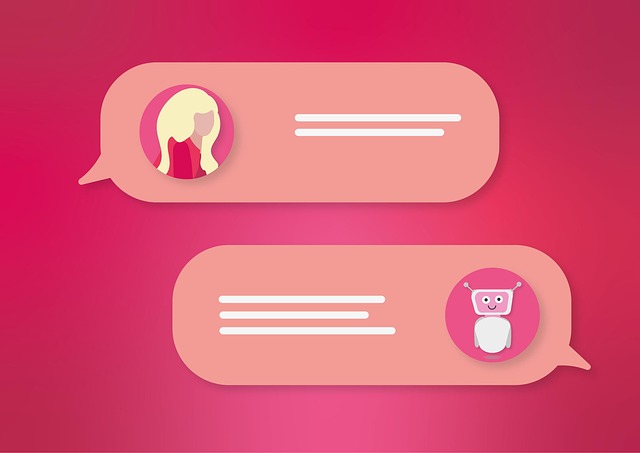Evaluating an AI Chatbot's performance involves key metrics like accuracy, response time, and scalability, crucial for user experience and business strategy. ROI is a critical measure comparing costs (development, deployment, maintenance) to gains (customer satisfaction, response times, sales conversions, cost savings). Cost-benefit analysis, using historical data and setting expectations, predicts long-term value. Beyond financial KPIs, success includes user satisfaction ratings, accurate responses, and handling diverse queries. Continuous improvement through updates, based on performance data and trend analysis, ensures chatbots remain competitive and evolve.
In today’s digital landscape, AI chatbots are transforming customer interactions. But how do you measure their true value? This article guides you through calculating the return on investment (ROI) for your chatbot. We’ll explore understanding key metrics, defining ROI specifically for chatbots, performing a cost-benefit analysis, and measuring success through continuous improvement. Discover how to optimize your chatbot’s performance and unlock its full potential in enhancing user experiences.
- Understanding Key Metrics for AI Chatbot Evaluation
- Defining Return on Investment (ROI) for Chatbots
- Calculating Cost-Benefit Analysis
- Measuring Success and Continuous Improvement
Understanding Key Metrics for AI Chatbot Evaluation

Evaluating an AI Chatbot’s performance is intricately tied to understanding key metrics that capture its effectiveness and efficiency. These metrics go beyond simple user satisfaction scores, delving into specific areas like accuracy, response time, and scalability. For instance, a chatbot’s accuracy can be measured by the proportion of correct responses out of all interactions, providing insight into its knowledge base and training.
Response time is another critical metric, especially in customer service contexts, where swift replies can significantly impact user experience. Scalability is also essential; a chatbot must handle increasing volumes of queries without compromising performance. These metrics are fundamental to understanding the value a chatbot brings to users and businesses alike, ultimately guiding improvements and strategic decisions in chatbot development.
Defining Return on Investment (ROI) for Chatbots

In the context of AI chatbots, Return on Investment (ROI) is a crucial metric to define and measure the success and profitability of your chatbot implementation. ROI refers to the gain or loss generated from an investment relative to its cost, offering a clear understanding of its financial viability. When evaluating a chatbot’s ROI, several factors come into play, including the initial development and deployment costs, ongoing operational expenses, and the revenue generated through its use. This calculation provides insights into whether the chatbot is delivering value by enhancing customer experiences, increasing sales, or streamlining operations, thereby justifying its investment.
Defining ROI involves setting clear objectives and establishing metrics to track performance. It could include metrics such as customer satisfaction scores, reduced response times, increased sales conversions, or cost savings achieved through automation. By comparing these gains against the chatbot’s financial outlay, businesses can ascertain the extent of their investment’s impact. This process allows for data-driven decisions, enabling companies to optimize chatbot performance and strategically plan future AI initiatives.
Calculating Cost-Benefit Analysis

Calculating the cost-benefit analysis is a crucial step in evaluating the return on investment for an AI Chatbot. It involves a detailed examination of both the financial and operational aspects, comparing the expenses incurred during development, deployment, and maintenance against the anticipated gains. This analysis should consider not only direct savings but also indirect improvements such as increased efficiency, enhanced customer satisfaction, and reduced support ticket volumes.
By analyzing historical data and setting realistic expectations, businesses can predict the long-term value of their AI Chatbot investments. This process includes identifying key performance indicators (KPIs) relevant to chatbot functionality, such as response accuracy, user engagement, and resolution time. Cost-benefit analysis also accounts for variable costs like energy consumption, software updates, and potential integration challenges, ensuring a comprehensive understanding of the chatbot’s overall economic impact.
Measuring Success and Continuous Improvement

Measuring the success of an AI Chatbot involves a multi-faceted approach, as its value extends beyond financial metrics alone. Key performance indicators (KPIs) should include user satisfaction ratings, response accuracy, and the bot’s ability to handle diverse user queries effectively. By analyzing these factors, businesses can ensure their chatbot provides a positive user experience and meets operational goals.
Continuous improvement is paramount in the evolution of AI Chatbots. Regular updates based on performance data, user feedback, and emerging trends enable chatbots to stay relevant and competitive. This iterative process involves refining algorithms, expanding knowledge bases, and enhancing conversational flows to deliver increasingly sophisticated and engaging interactions.
Calculating the return on investment (ROI) for an AI chatbot involves a comprehensive analysis of key metrics, including user satisfaction, engagement rates, cost savings, and increased revenue. By understanding these metrics and conducting a thorough cost-benefit analysis, businesses can effectively measure the success of their chatbot implementation. Continuous improvement should be at the forefront of this process, ensuring that the chatbot remains adaptable and aligned with user needs, ultimately enhancing its value over time. This strategic approach to evaluating chatbots empowers organizations to make data-driven decisions and maximize their investment in AI technology.
